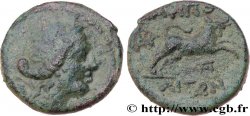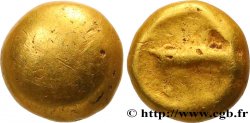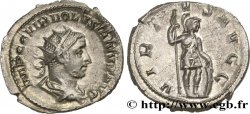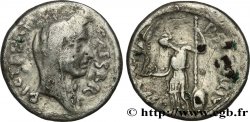v57_0065 - MACEDONIA - AMPHIPOLIS Tétradrachme stéphanophore
MONNAIES 57 (2013)
Starting price : 320.00 €
Estimate : 550.00 €
unsold lot
Starting price : 320.00 €
Estimate : 550.00 €
unsold lot
Type : Tétradrachme stéphanophore
Date: c. 150 AC.
Mint name / Town : Amphipolis, Macédoine
Metal : silver
Diameter : 30,5 mm
Orientation dies : 12 h.
Weight : 16,90 g.
Rarity : R1
Coments on the condition:
Exemplaire sur un flan large et ovale bien centré des deux côtés. Beau portrait de haut relief à l’usure superficielle. Joli revers, de style fin, bien venu à la frappe, servi par une patine grise de collection ancienne avec des reflets dorés
Catalogue references :
Obverse
Obverse legend : ANÉPIGRAPHE.
Obverse description : Buste diadémé et drapé d'Artémis Tauropolos à droite, l'arc et le carquois sur l'épaule, placé au centre d'un bouclier macédonien orné d'étoiles.
Reverse
Reverse description : Légende de chaque côté d'une massue ; au-dessus, un monogramme.
Reverse legend : MAKEDONWN // PROTHS// (SAUHR)/ (TKo)/ (MTE)
Reverse translation : (Macédoine première).
Commentary
Les auteurs de l’AMNG avaient recensé seize exemplaires pour cette variété. Nous remarquons en particulier le petit monogramme TKp et un monogramme (MTE) référencé sous le numéro 15 conservé au Kunsthistorisches Museum de Vienne. Au droit, sur le bouclier macédonien, le buste d’Artémis est entouré d’une frise de sept motifs formés à partir d’une combinaison luni-solaire associant un double croissant de lune superposé et d’un astre solaire avec huit rais centré d’un globule. Lettres globuleuses.








 Report a mistake
Report a mistake Print the page
Print the page Share my selection
Share my selection Ask a question
Ask a question Consign / sell
Consign / sell
 Full data
Full data















